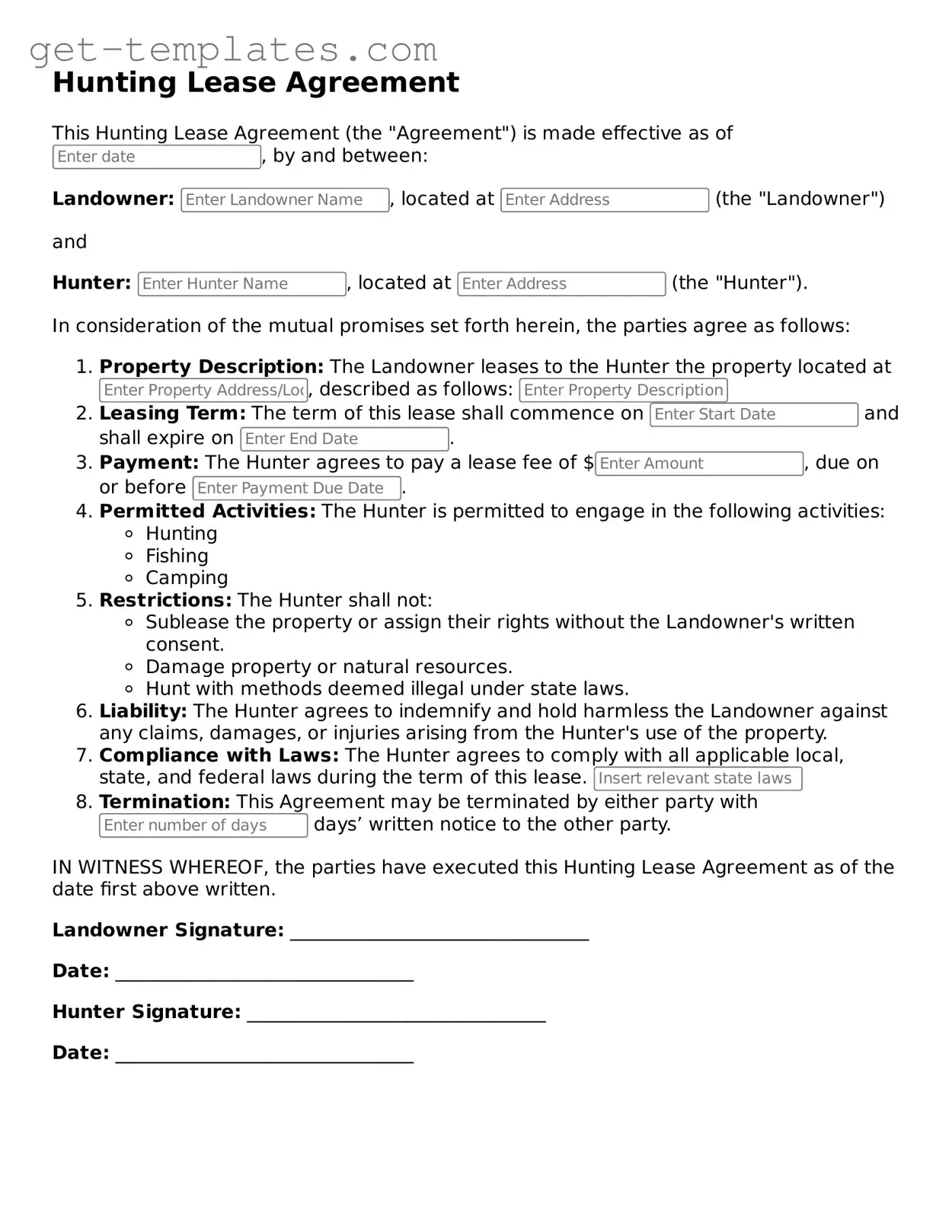What is a Hunting Lease Agreement?
A Hunting Lease Agreement is a legal document that outlines the terms and conditions under which one party (the lessor) allows another party (the lessee) to hunt on their property. This agreement protects the rights of both parties and ensures that hunting activities are conducted safely and responsibly.
Who needs a Hunting Lease Agreement?
Anyone who owns land and wants to allow hunting on that land should consider a Hunting Lease Agreement. This includes private landowners, farmers, and ranchers. Additionally, hunters who wish to secure a place to hunt should understand the terms laid out in the agreement.
What are the key components of a Hunting Lease Agreement?
A Hunting Lease Agreement typically includes:
-
The names and contact information of both parties.
-
A description of the property being leased.
-
The duration of the lease.
-
The amount of rent and payment terms.
-
Rules and regulations regarding hunting activities.
-
Liability and insurance requirements.
How long does a Hunting Lease Agreement last?
The duration of a Hunting Lease Agreement can vary. It may last for a single hunting season, multiple years, or even indefinitely, depending on the agreement made between the lessor and lessee. Always specify the start and end dates in the document.
Can the lease be renewed?
Yes, many Hunting Lease Agreements include a renewal clause. This allows the lessee to extend the lease under the same terms or negotiate new terms. It’s essential to discuss renewal options before the lease expires.
What happens if the lessee violates the agreement?
If the lessee violates any terms of the Hunting Lease Agreement, the lessor has the right to terminate the lease. Violations can include hunting outside of designated areas, not adhering to safety rules, or failing to pay rent on time. Clear consequences should be outlined in the agreement.
Is insurance required?
Insurance requirements can vary based on the agreement. Many lessors require the lessee to carry liability insurance to cover any accidents or injuries that may occur during hunting activities. This protects both parties from potential legal issues.
Can the lessor enter the property during the lease?
Generally, the lessor retains the right to enter the property, but this should be clearly stated in the agreement. The lessor may want to check on the property or ensure that the terms of the lease are being followed. It’s courteous to provide notice before entering.
What if there are disputes between the parties?
Disputes should ideally be resolved through communication. The agreement may include a clause for mediation or arbitration to settle conflicts without going to court. Having a clear process outlined can help both parties feel secure in their rights.
You can find Hunting Lease Agreement forms online through legal websites, or you may consult with a local attorney who specializes in property or hunting laws. Make sure to choose a form that complies with your state’s laws.
